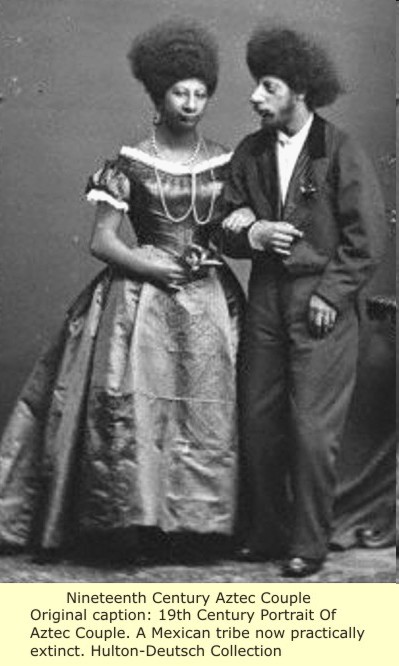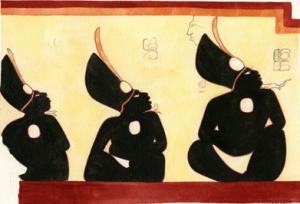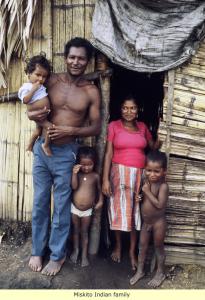
Unraveling the Mysteries of the Miskitu Kingdom

The Article sparks historical interests of the Miskitu nation as they confront the world over the transgressions against their people through peaceful means.
OAKLAND, CALIFORNIA, UNITED STATES, July 29, 2017 /EINPresswire.com/ -- Cebu, July 29, 2017 – Few people have ever heard of the Central American nation of the Miskitu Kingdom (Miskitu Coast), nor are they aware of the severe suffering that is taking place in this region of along the Caribbean Sea.
The history of the Miskitu nation predates Christopher Columbus. Their struggle to regain their rights to exist as a nation has been drowned out with publicly disseminated false information released by many of America's most prestigious in order to quell their claims and human rights abuses. These originated with a simple papal decree issued against the New World peoples and nations. Unraveling the mysteries of the Miskitu Kingdom is as simple as looking at the facts with an open mind.
In 1502, during the third voyage of Christopher Columbus, his son Fernando described the Miskitu people as “almost Negroes in color,” while Columbus believed them to be "great sorcerers" and "very terrible." For those readers who are into Central American portraits and glyphs, one would find pictures of both black and white inhabitants of Central America found at the Xultan Palace in Belize dating back to 800 A.D. Besides the Olmec era whom display Black features in their stone monuments, there are Mayan glyphs on Chama vases depicting the rulers greeting Black personages. Furthermore, there are eyewitness accounts of seeing black people in Mesoamerica at the time of the Spanish arrival, such as what Fernando Columbus as described.
The Northern Nahuatl-speaking Indians of Aztec Mexico who accompanied the Spanish to the Moskitu kingdom referred to the Miskitu as “chontal” or “foreigner” because they were of different races than the Aztec and Mayan civilizations. They were never conquered by anyone.
Contrary to the Spanish first contact, the British, when establishing the Providence Island colony, found the Miskitu people and King quite amicable. This colony was established in the Miskitu Kingdom in the year of 1631 by English Puritans. John Pym instructed the captain of the expedition, Sussex Cammock, to venture to Cape Gracias a Dios located in the Miskitu Kingdom to "endear yourselves with the Indians and their commanders".
One English trader who visited the Miskitu Kingdom in 1699 detailed how the people lived in harmony and as equals, except during expeditions where at that time the Miskitu people submitted to their “commanders and kings”.
Contrary to mainstream media suggesting that all of the Black people of Central America were shipwrecked slaves, these “Black people” were already there at the time of Christopher Columbus. Not only were these first “Black Americans” in Mesoamerica prior to the Spanish, but these people were part of a kingdom of diverse peoples that entertained commanders and kings prior to any treaty with the British. These Black people of Central America were part of the 12 tribes that make up the Miskitu Kingdom who held various titles and positions in their government.
Maps showing the Viceroyalty of New Spain, circa 1650 identify the regions of Central America that Spain claimed, yet the Miskitu Kingdom of the Caribbean coast that stands out on those maps as being under the “strong influence” of Great Britain.
The British influence cannot be denied of having a major impact on the Miskitu Coast from the 1600’s to the beginning of the Treaty of Friendship and Alliance with the Miskitu kingdom that was signed on March 16, 1740 between King Edward I of the Miskito Nation and the British.
From that point in time on, the British used instrumentality as a method of “indirect rule” entering continuous treaties that affected the Miskitu people without their consent, even after the British relinquished their position of authority over the Miskitu nation in a treaty between Spain at the Convention of London in 1786. It is very noteworthy indeed that the British referred to the Miskitu nation as the “Country of the MOSQUITOS.” This treaty did not confer sovereignty of the Miskitu people to the dominion of Spain, but rather afforded Great Britain to “evacuate its people” in exchange for Belize.
The Spanish took this “treaty” with the British as affording their right to the conquest of the Miskitu Kingdom under the ordination of nations by the Catholic Pope’s papal decree. The Spanish did not want any direct negotiations with the Miskitu Kingdom and referred to them as savages and unable to govern themselves. Even among themselves with the strongest desire to control this region, conflicts arose after 1803 between the new nations of Colombia and Nicaragua, as well as the British “overseers” of the transition assuring both recognition of the Miskitu royal family and self-rule in their region.
During this era of time, the United States in 1823 announced to the world a new doctrine, called the “Monroe Doctrine” warning the European nations to avoid any further colonization in North and South America. The topic of serious discussion since the 1820s, in both the United States and Nicaragua was talk of the construction of a canal where Nicaragua was long a favored location
Meanwhile, the Spanish, as well as other nations such as the United States, envisioned an inter-oceanic canal running through the Miskitu Kingdom. New treaties during the 1800’s were signed between Nicaragua and Great Britain regarding the future of Miskitu Kingdom, as well as treaties between the United States and Great Britain regarding this very same region and America’s vision of an inter-oceanic canal known as the Clayton-Bulwer Treaty of 1850 that assured United States dominion over any canal built.
Continued in frame below...
Ercell Valcina Monic Hendy Rima Fleurima Tawaska
Miskitu Nation in Exile
510-868-0658
email us here
Miskitu Nation Under Siege
EIN Presswire does not exercise editorial control over third-party content provided, uploaded, published, or distributed by users of EIN Presswire. We are a distributor, not a publisher, of 3rd party content. Such content may contain the views, opinions, statements, offers, and other material of the respective users, suppliers, participants, or authors.



